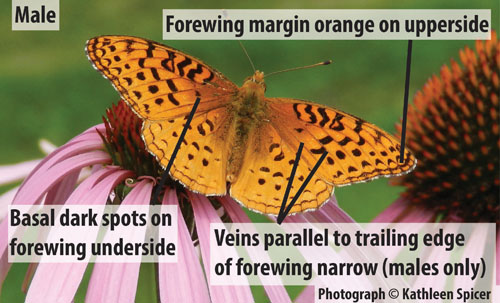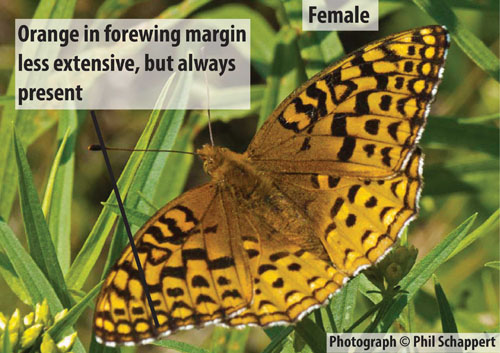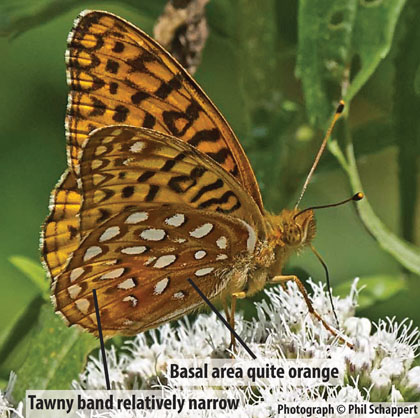Aphrodite Fritillary (Speyeria aphrodite)
Description: Aphrodite Fritillary is a large fritillary similar to Great Spangled and Atlantis Fritillaries. Males are easiest to distinguish, as they lack the black scaling around the veins parallel to the trailing edge of the forewing, which makes these veins appear quite thin (these scales are present in male Atlantis and Great Spangled Fritillaries, making these veins appear thickened). Compared to Great Spangled Fritillary, both sexes of Aphrodite Fritillary show a narrower tawny submarginal band on the hindwing underside and oranger colouration on the basal portions of the hindwing underside (beware that male Great Spangled Fritillaries are considerably oranger than female Great Spangled Fritillaries). Aphrodite Fritillaries also possess a black spot near the base of the forewing upperside (this is quite small on some Aphrodite specimens, and present on some Great Spangled specimens). Both sexes of Aphrodite Fritillary can be distinguished from Atlantis Fritillary by their brown eyes (eyes turn brown in all fritillaries after death), oranger colouration on the basal portions of the hindwing underside and the presence of orange scaling on the border of the forewing upperside (orange scaling is absent or restricted to the posterior-most reaches of the border in Atlantis, this difference is most pronounced in males, some female Atlantis with much orange scaling appear similar to Aphrodite). To apply all these characters compare images of Aphrodite Fritillary with Atlantis and Great Spangled. Wingspan: 51 to 73 mm.
Maritime Distribution: Widespread throughout the Maritimes. For Atlas results click here.
Provincial Ranks: NB: S3. NS: S3. PEI: S1.
Flight Period: Late June to late August.
Host Plant: Various violets (Viola spp.).
Notes: This conspicuous butterfly is much less common than either the Great Spangled or Atlantis Fritillary. It is more restricted than those two species to rich, moist meadows.



